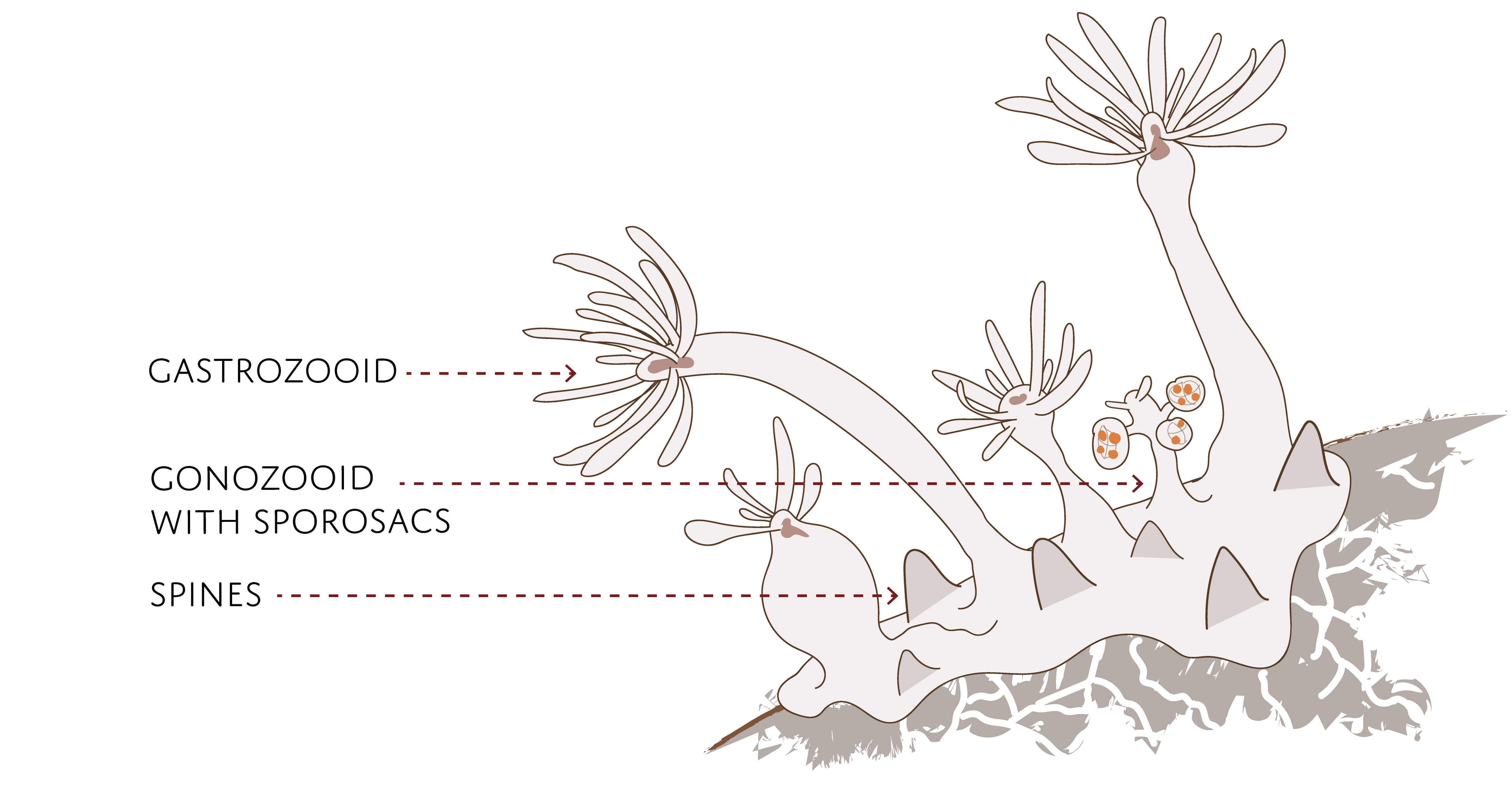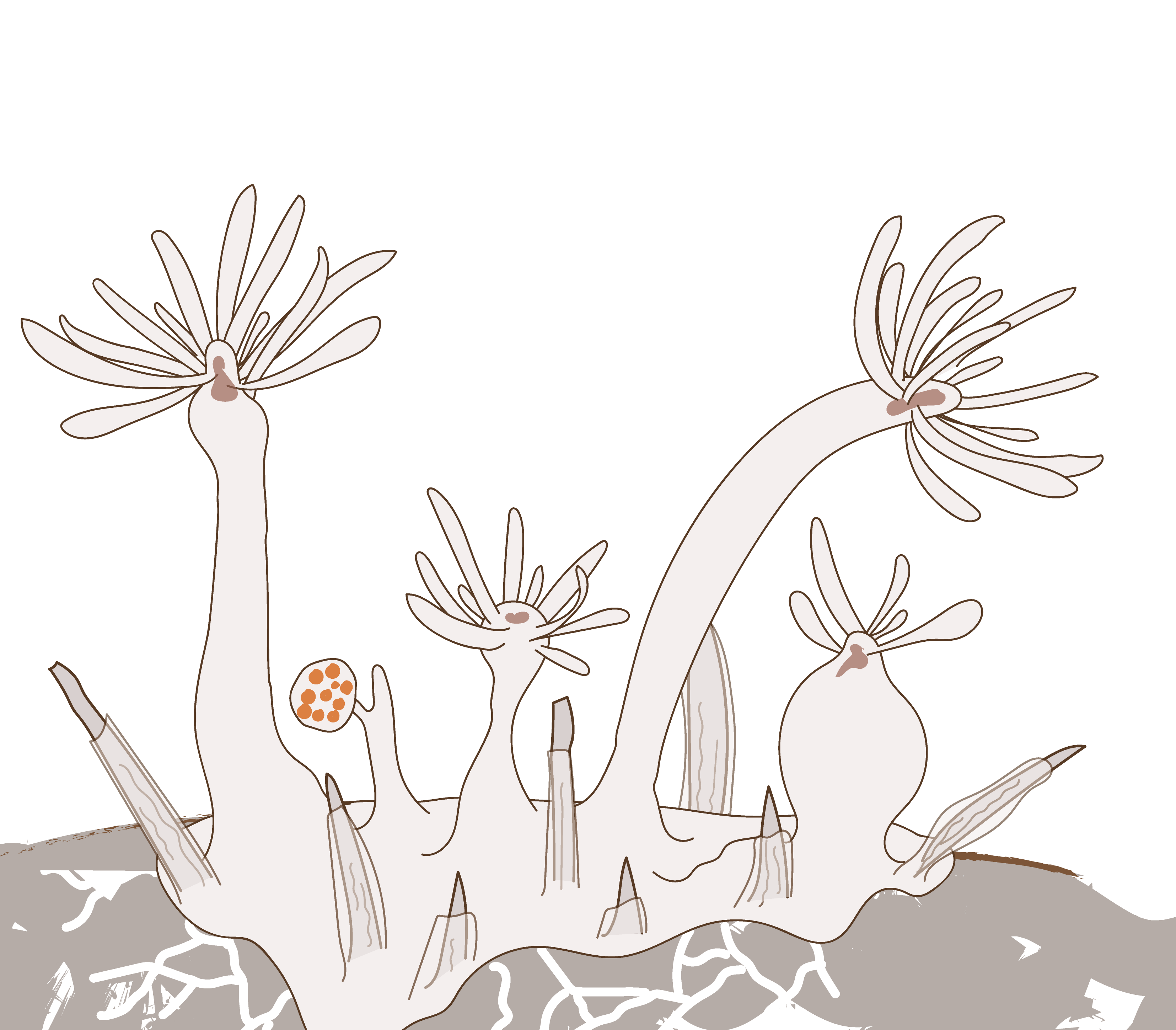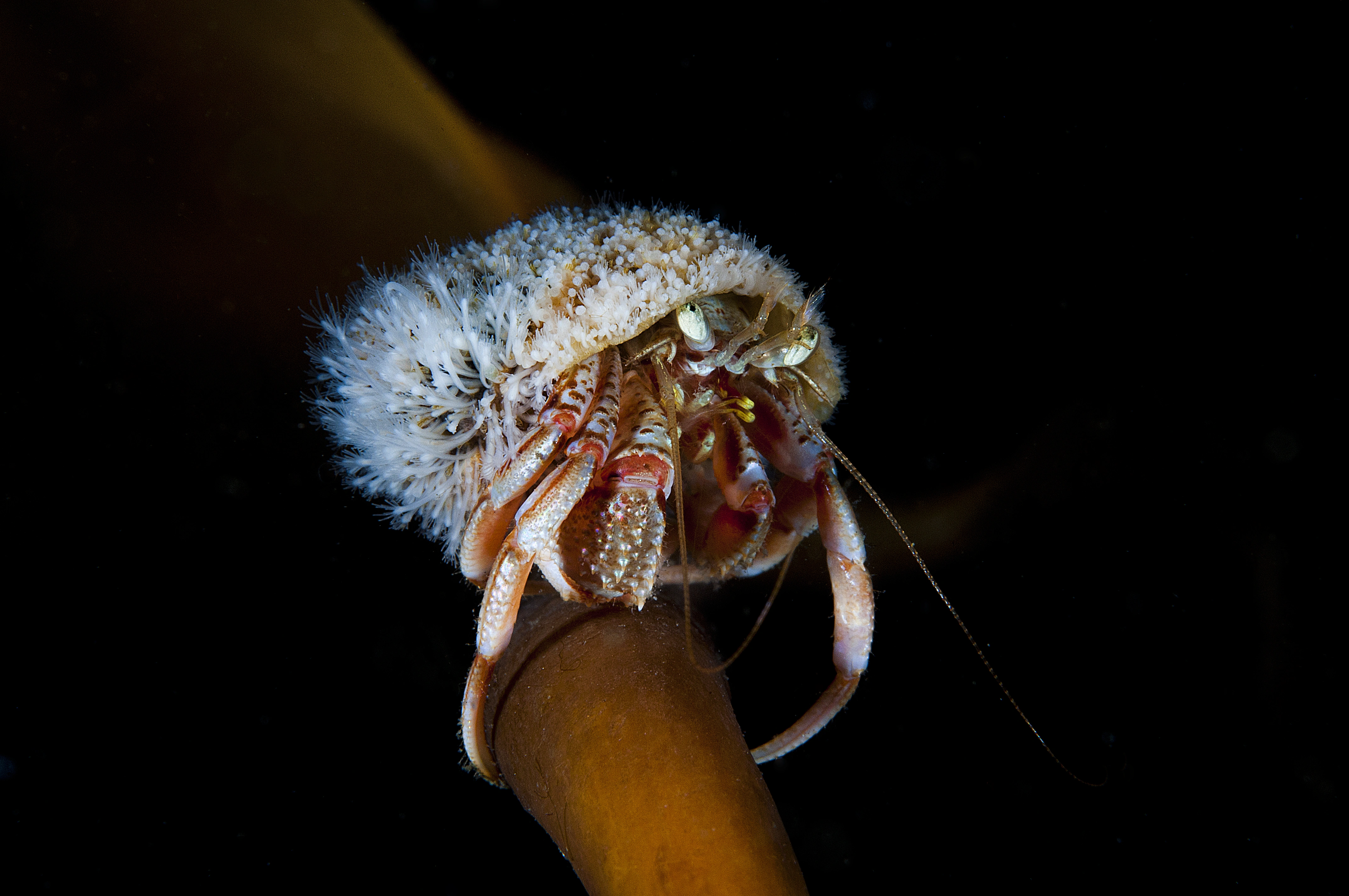Hydractinia carica
This is a predominantly Arctic species for which most of the records come from Spitsbergen. The colonies of Hydractinia carica grow on marine snails of the genus Buccinum, but unlike other Hydractinia species they seem to be associated with the living snails and are not present when the shell is inhabited by hermit crabs. The combination of their preferred substrate, smooth small conical spines, and gonozooids without tentacles helps to distinguish this species from other Arctic hydractiniids.
Identification
The colonies of H. carica have feeding polyps (gastrozooids) and reproductive polyps (gonozooids) which differ greatly from each other. The ‘root’ system of the colony (also called hydrorhiza) forms a crust-like layer from which the polyps and spines emerge, but unlike some other Hydractinia species this layer has no prickles. The gastrozooids are up to 2.5 mm high and have 12–16 tentacles. The gonozooids are usually much smaller compared to the gastrozooids. When they begin to develop gonophores, the gonozooids may look similar to the gastrozooids, but with time they become extremely reduced, without tentacles (or only with 2–4 very short ones). Whenever the colonies have spines these are short, conical, and with rounded tips. The gonophores are fixed sporosacs, they are usually 3–7 per gonozooid and each female one has 5–6 eggs.
Relevant characters for identification of Hydractinia carica.
Look-alikes
The colonies of H. carica resemble those of H. sarsii, but the two species can be distinguished because the gonozooid are strongly reduced and lack tentacles in H. carica, while they are similar to gastrozooids and have up to 30 tentacles in H. sarsii.
Hydractinia monocarpa shares with H. carica the Arctic affinity and preference for living snails, but both species differ in the shape of the spines (small and conical in H. carica, long and slender in H. monocarpa), the number of gonophores per gonozooid (3–7 in H. carica, 1–2 in H. monocarpa), and the number of eggs per gonophore (5–6 in H. carica, 50 in H. monocarpa).
Some colonies of Hydractinia echinata may be confused with those of H. carica, but the latter has smooth spines while H. echinata has serrated (spiky) spines. Finally, substrate preference is an important character that helps recognize H. carica from the three other species of Hydractinia that occur in Norway: unlike H. sarsii and H. echinata, H. carica grows preferably on shells still inhabited by the snail and not by hermit crabs; and unlike H. monocarpa which often grows on Boreotrophon snails, the preferred substrate for H. carica are Buccinum snails.
Biology, ecology and behavior
The colonies of this species grow preferably on snail shells of the genus Buccinum (for example B. ciliatum, B. glaciale, B. scalariforme, and B. undatum) inhabited by the snail and not by hermit crabs. Hydractinia carica is a shallow water species with a preferred depth range of 0–120 m.
Distribution
Most of the records of this species in Norway come from Svalbard, although it was reported once from Bergen. Elsewhere in the world it occurs in western Greenland, northeastern Canada, the Kara and Bering Seas, Sea of Okhotsk, and the Japan Sea.
References
Schuchert P (2008). The European athecate hydroids and their medusae (Hydrozoa, Cnidaria): Filifera Part 3. Revue suisse de Zoologie 115(2):221–302.



